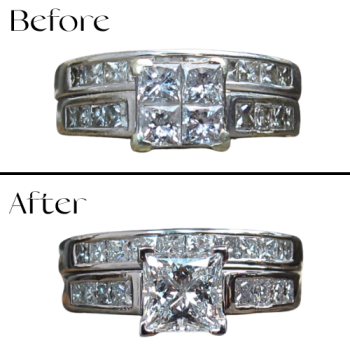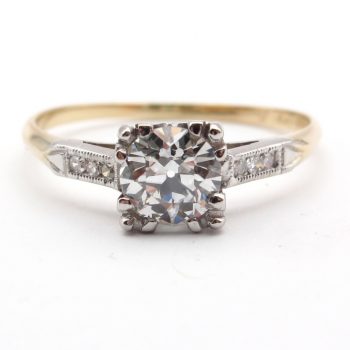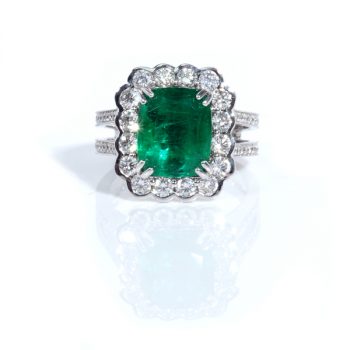Who Pays for an Engagement Ring?

The act of proposing marriage is a significant milestone in a couple’s journey, symbolizing love, commitment, and a shared future. Traditionally, it has been customary for the person proposing to present an engagement ring as a symbol of their love and intention to marry. However, as societal norms evolve and gender roles shift, the question of who pays for the engagement ring has become a topic of discussion and exploration.
In this blog post, we will delve into the historical origins of this tradition, examine its relevance today, and explore the modern perspectives surrounding the financial responsibility of buying an engagement ring.
Historical Origins of the Engagement Ring
The tradition of giving an engagement ring dates back centuries, with roots in ancient Rome and Egypt. Rings were considered a symbol of eternity, love, and commitment. The practice gained popularity in the 20th century, largely influenced by clever marketing campaigns by diamond companies, most notably De Beers. They successfully established the notion that an engagement ring should be a diamond ring, with the famous slogan “A Diamond is Forever.”

Traditional Expectations
Traditionally, it has been expected that the person proposing should shoulder the financial responsibility of purchasing the engagement ring. This expectation was based on the belief that men were the primary earners and providers in relationships. The size and cost of the ring were often seen as a reflection of the man’s ability to provide for his future spouse. This traditional expectation has led to the idea that an engagement ring should cost a significant portion of the proposer’s salary. The range is typically two to three months’ salary.
Shifting Perspectives
In recent years, there has been a gradual shift away from traditional gender roles and expectations. This is both in relationships and society as a whole. Many couples now view engagement as a mutual decision and commitment rather than a one-sided affair. Consequently, the notion that only one partner should bear the financial burden of the engagement ring is being questioned and challenged.
Do Couples Split the Cost of an Engagement Ring?
Increasingly, couples are adopting the practice of shared financial responsibility when it comes to purchasing an engagement ring. This approach acknowledges that marriage is a partnership and that financial decisions should be made collaboratively. Some couples may choose to split the cost of the ring evenly. Others may contribute according to their financial situations or preferences.

3 Alternative Engagement Ring Options:
Apart from splitting the cost, there are other alternative options that couples can consider:
Upgrading the Ring
Instead of buying a ring that is way out of your budget initially, couples may choose a more affordable ring and plan to upgrade it in the future when their financial situation allows. Many choose significant years to upgrade, like years 5, 10, 15, or even 20.
A great jeweler will have a diamond upgrade policy on their diamonds. At Arnold Jewelers, we offer a lifetime diamond value upgrade to all of our customers, both in-store and online. We give customers the full amount of their original purchase price towards the purchase of a new diamond of greater value. This is always a great and budget-friendly alternative for couples to consider.

Proposing with Family Heirlooms

Using a family heirloom ring can hold sentimental value and eliminate the need to purchase a new one. A ring passed down from generation to generation is a cherished tradition that symbolizes the enduring love and commitment within a family’s history. It not only holds sentimental value but also serves as a tangible reminder of the enduring bond shared among loved ones throughout the ages.
This timeless symbol is a testament to the rich heritage and profound connection that unites families across time, making it a truly meaningful and significant heirloom to treasure. Just be sure to have family heirloom rings taken to your local Jeweler. You’ll want a thorough inspection to make sure the prongs are strong and every component is in tip-top shape for the proposal and security of the stone and ring!
Buying Alternative Engagement Rings
Some couples opt for non-traditional choices like alternative gemstone engagement rings, personalized bands, or even custom-designed rings in favor of other symbols of commitment. These are all good options to personalize the perfect engagement ring. Not sure where to start the custom ring journey? Read our blog here to see how easy it is to get started crafting a one-of-a-king engagement ring.

Communication is Key When Purchasing an Engagement Ring
The most important aspect of the engagement ring discussion is open and honest communication between partners. Discussing expectations, preferences, and financial limitations can help avoid misunderstandings and ensure that both partners are comfortable with the decision.
The question of who pays for an engagement ring has evolved significantly over time. Traditional expectations place financial responsibility on the person proposing. However, modern perspectives embrace shared financial responsibility and alternative options.
Ultimately, the decision should be based on open communication and the unique dynamics of each relationship. What matters most is the love, commitment, and understanding shared between partners as they embark on their journey together.
See our stunning collection with every style and size to fit any budget!
-
Categories:
- Jewelry Trends
- Engagement Ring Blog
